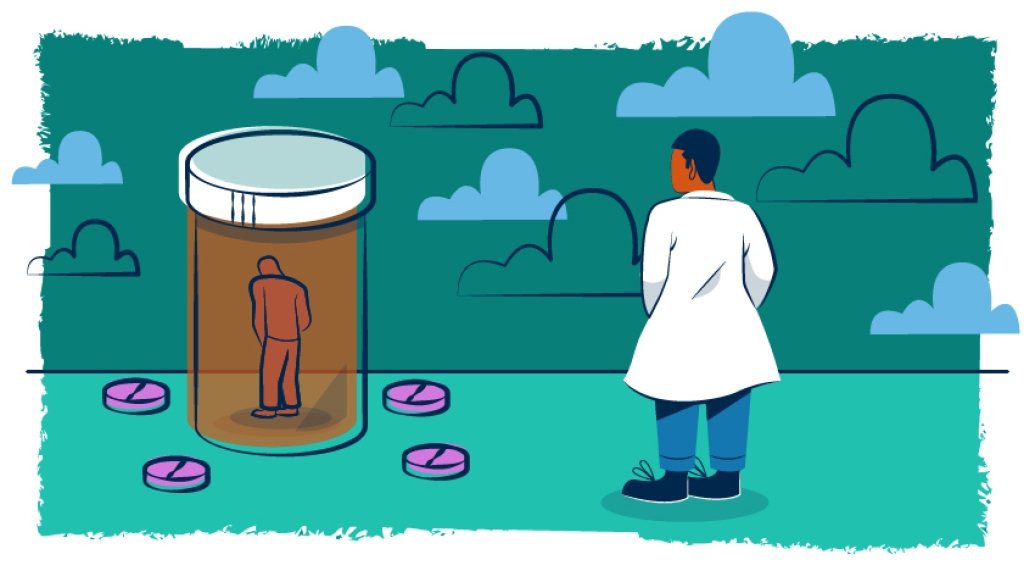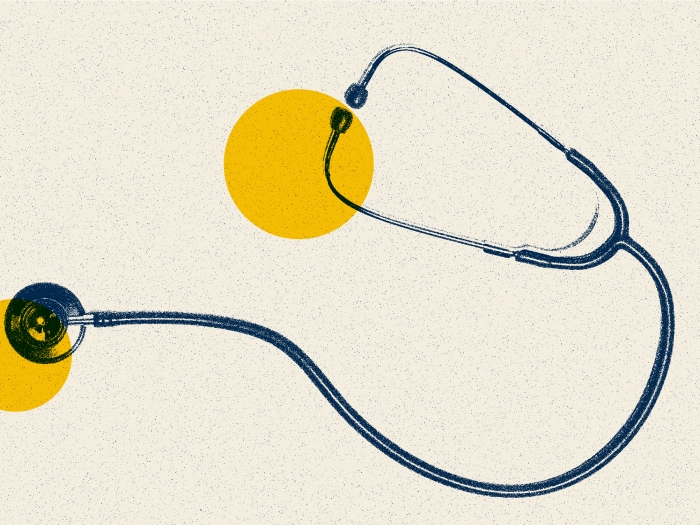Abrupt policy shift removed barrier to prescribing buprenorphine, but didn’t lead to a sharp rise in prescribing by the end of the first year
5:01 PM
Author |

For years, even as opioid overdose deaths dramatically increased, doctors and other prescribers in the United States needed special permission from the federal government if they wanted to prescribe buprenorphine, a medication that helps patients overcome opioid addiction and prevents fatal overdoses.
That requirement, called an “X waiver,” was eliminated on January 12, 2023 due to an item in a major federal budget bill. This meant that suddenly, any clinician who had a license to prescribe controlled substances could prescribe buprenorphine.
Now, a new study by University of Michigan researchers looks at what happened in the year after that federal policy change.
Published in the New England Journal of Medicine, the study finds that the number of buprenorphine prescribers increased rapidly after the policy change. By December 2023, more than 53,600 clinicians prescribed buprenorphine, an increase of 11,500 over December 2022.
But the rise in available treatment providers didn’t spark meaningful increases in patients getting care in 2023, the new findings show. In any given month of 2022, about 810,000 to 830,000 Americans were prescribed buprenorphine, but these numbers changed little after January 2023.
“Our findings suggest that elimination of the federal waiver requirement reduced barriers to buprenorphine prescribing but unfortunately was insufficient to increase overall use,” said Kao-Ping Chua, M.D., Ph.D., the study’s first author.
“The fact that this policy failed to increase the number of patients with buprenorphine prescriptions through the first year of implementation highlights the many other barriers to buprenorphine prescribing that must be overcome,” added Thuy Nguyen, Ph.D., the senior author of the manuscript.
The study found a small jump in January 2023 in the number of patients starting buprenorphine for the first time. And in December 2023, more than 48,200 patients started taking the medication – up from the 46,500 patients who started in December 2022. These numbers include any patient who hadn’t received buprenorphine in at least six months.
People with opioid addiction often need to take buprenorphine daily for months to years to overcome addiction to the opioid they are trying to quit – whether it’s heroin, prescription painkillers such as hydrocodone and oxycodone, or synthetic opioids like fentanyl.
Slow change after policy shifts
The government’s decision to eliminate the waiver was designed to decrease barriers to buprenorphine prescribing and promote access to this lifesaving drug.
The January 2023 change came after the federal government tried other tactics during the COVID-19 era, including allowing telehealth based prescribing of buprenorphine and allowing prescribers to obtain an X waiver to prescribe buprenorphine to 30 or fewer patients without undergoing 8 hours of training.
Chua and colleagues previously showed that even with these earlier changes, the number of new patients using buprenorphine for the first time was flat between 2019 and 2022.
The stigma against treating people with opioid addiction, and the challenge of adding new types of care and support in primary care clinics and pain clinics that are already overburdened by other patient demands may be affecting the number of patients seeking or getting care.
Chua is co-director of the Research and Data Domain at the U-M Opioid Research Institute (ORI), as well as being an assistant professor of pediatrics in the Medical School with a joint appointment in the School of Public Health, and a member of the Susan B. Meister Child Health Evaluation and Research Center and the Institute for Healthcare Policy and Innovation (IHPI).
Nguyen is a health economist at the U-M School of Public Health and member of ORI and IHPI. Other authors are ORI co-director Amy Bohnert, Ph.D., and ORI/IHPI members Mark Bicket, M.D., Ph.D., and Pooja Lagisetty, Ph.D., who is Chua’s domain co-director at ORI, as well as Rena Conti, Ph.D. of Boston University.
Our findings suggest that elimination of the federal waiver requirement reduced barriers to buprenorphine prescribing but unfortunately was insufficient to increase overall use."
-- Kao-Ping Chua, M.D., Ph.D.
Effort to support increased buprenorphine prescribing
Several of the authors have been involved in the Michigan Opioid Collaborative, which since 2017 has helped primary care providers, hospitals and others increase the availability of buprenorphine to patients in Michigan through free consultations, training events and more.
Recently, the MOC team, including Bohnert, published findings from the effort’s first years in JAMA Network Open.
Because the MOC effort rolled out gradually across Michigan’s 83 counties, they were able to track how the number of prescribers offering buprenorphine, and the number of patients receiving it, changed in counties where MOC had a presence, compared with those where it wasn’t yet available.
The study showed a clear, sharp rise in both prescribers offering the treatment, and people receiving it, starting soon after MOC became available to support prescribers in a county. Meanwhile, no such rises happened in counties that had not yet become part of the MOC coverage area. MOC now covers all areas of the state, though the study covers a time period through 2020 when there were still more than 20 counties not yet participating.
MOC recently merged with another U-M opioid effort to become the Overdose Prevention Engagement Network, and continues to offer consultation, on-demand online training to comply with the current federal requirement, and more as well as screening tools for opioid use disorders and opioid-sparing surgical prescribing tools.
Visit michigan-open.org for more information or to seek a consultation about prescribing buprenorphine.
The U-M Opioid Research Institute also offers an overview of the addiction-related training requirements for all prescribers of controlled substances, which took effect in mid-2023.
Funding: The study was funded by the National Institute on Drug Abuse, part of the National Institutes of Health (R01DA056438).This content is solely the responsibility of the authors and does not necessarily represent the official views of the National Institutes of Health.
Citation: Buprenorphine Dispensing after Elimination of the Waiver Requirement, New England Journal of Medicine, DOI:10.1056/NEJMc2312906, https://www.nejm.org/doi/full/10.1056/NEJMc2312906
Sign up for Health Lab newsletters today. Get medical tips from top experts and learn about new scientific discoveries every week by subscribing to Health Lab’s two newsletters, Health & Wellness and Research & Innovation.
Sign up for the Health Lab Podcast: Add us on Spotify, Apple Podcasts or wherever you get you listen to your favorite shows.

Explore a variety of healthcare news & stories by visiting the Health Lab home page for more articles.

Department of Communication at Michigan Medicine

Want top health & research news weekly? Sign up for Health Lab’s newsletters today!





